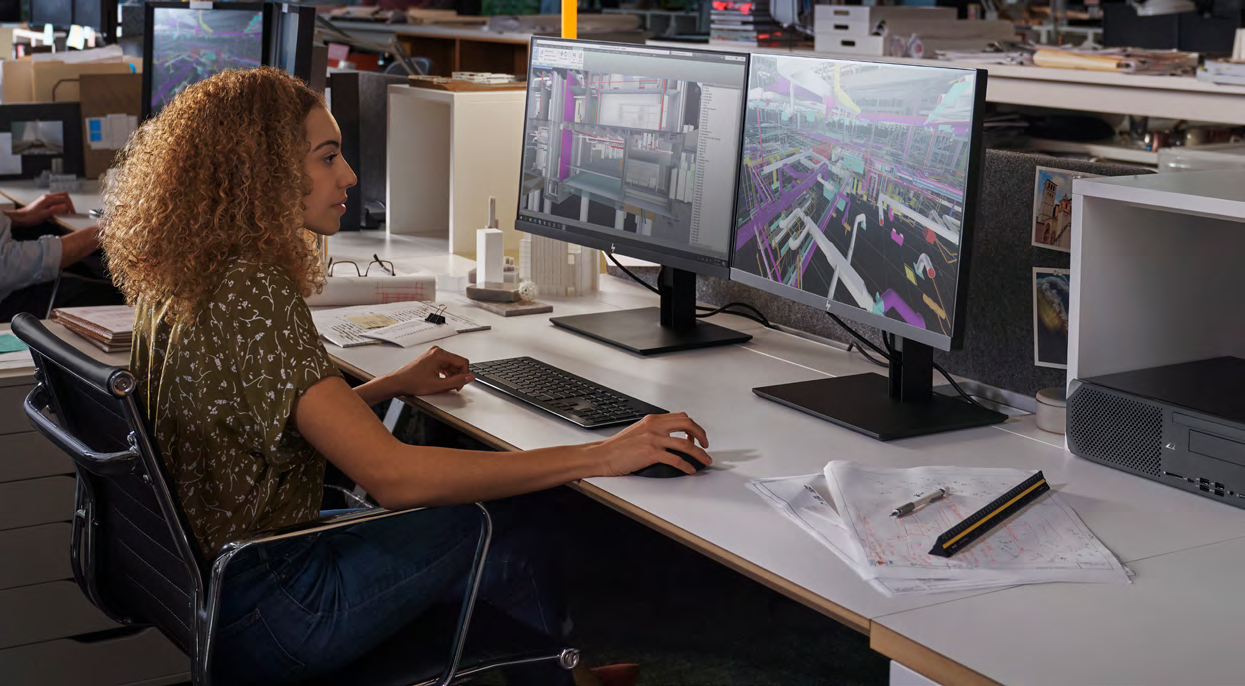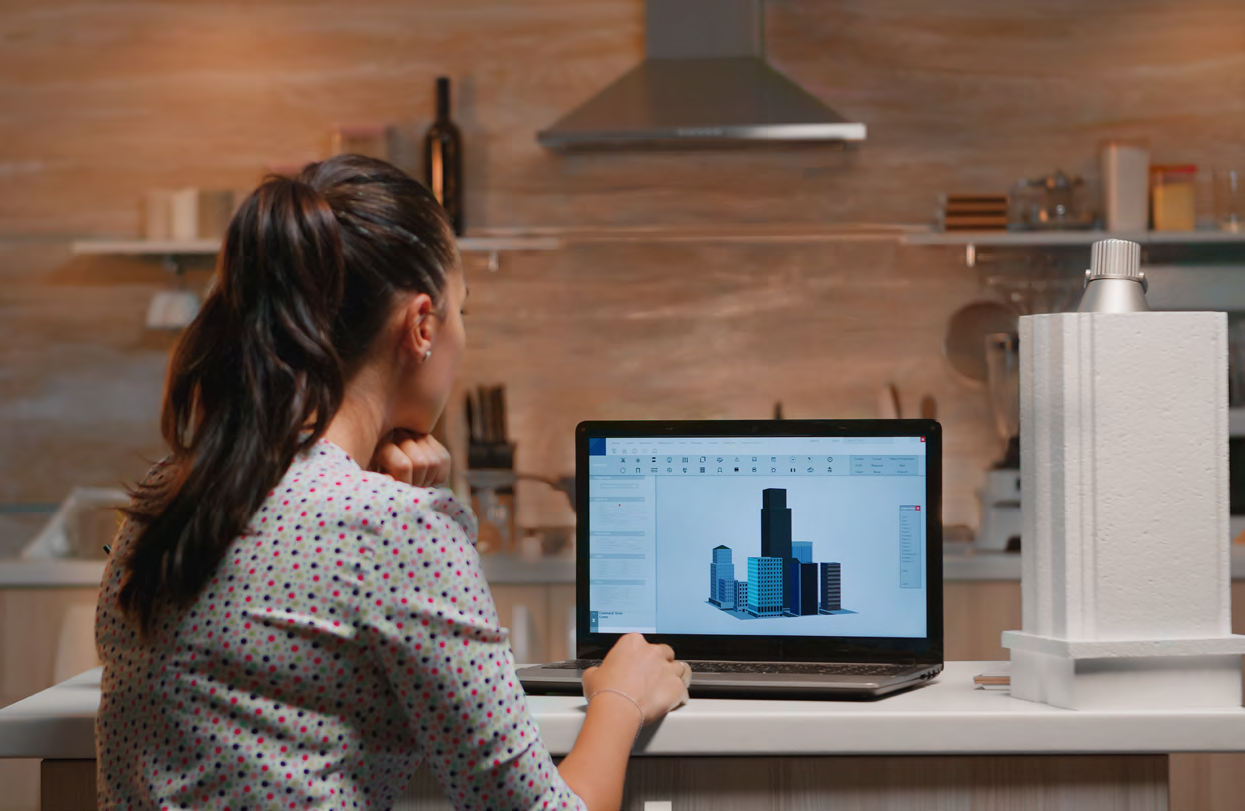
In order to make the infrastructure we live and work in ready for the demands of today, engineers need to be better equipped. They need new ideas, new ways of working, and new technology to set the foundations for a smarter, safer, and more socially responsible world. That is both a huge opportunity, and a giant leap for many working in the Architecture, Engineering, and Construction (AEC) sector. Imagine you want to know when the restaurant down the street opens, or get the latest global news updates: chances are you’ll take out your smartphone, tap the screen, and find what you’re looking for within seconds. Now consider the way AEC professionals typically access information about their projects. The comparison is not a favorable one, according to Eric Bugeja, the Sydney-based chairperson of BuildingSMART Australasia. The process likely involves “trawling through specifications and manuals and drawings and programs and schedules and plans and specifications.” BuildingSMART,iii a global nonprofit made up of regional chapters, wants to change this. By promoting the use of Building Information Modeling (BIM) and other digital technologies, it hopes to improve every stage of a project’s lifecycle—and, in so doing, create better buildings and infrastructure for everyone. Bugeja likes to use smartphone analogies to dispel the common misconception that BIM is essentially just a better version of CAD —an automated drafting tool. Instead, he asserts, BIM represents a much more dramatic leap into the digital age, offering rapid access to up-to-date, accurate information drawn from multiple sources. “As an example, if you want to know about something simple, like a pump that sits within a plant room, [in BIM] you see the graphical representation of that pump, you click on that pump, you can get access to all that information,” he says. | No more poring through multiple documents, wondering all the while whether they’re the latest versions. BIM is only one of the core digital processes transforming the industry, of course. Today, engineers and builders are finding new applications for everything from augmented reality to machine learning. But at a high level, these tools share a common value proposition: they make it easier for people to access the information they need when they need it. For engineers, better access to data offers particularly exciting opportunities, according to Bill Allen, CEO of Colorado-based BIM consultancy EvolveLAB—opportunities that have only begun to be explored. “If [a business leader] is running a structural, mechanical, or plumbing design firm, there’s a ton of data in there to be able to optimize structural loads, thermal capacities, and volume of airflow for the mechanical units,” Allen says. “It’s very advantageous for her, because she’s working from an objective standpoint, whereas an architecture firm tends to be more subjective—red brick versus white brick. If you’re working at an Mechanical, Electrical, and Plumbing (MEP) or a structural firm, that’s math, and that’s a huge opportunity for optimization and data-driven design.” |
“At the core of digitalization is the fact that we have more accurate data that is readily available, so what does that mean? We get greater efficiency, we get fewer errors, and we get better design outcomes.” Eric Bugeja, Chairperson, BuildingSMART Australasia |

| Expanding the solution space | The obvious solution |
|---|---|
Dr. Renate Fruchtervi is a pioneer in AEC digitalization, having led research into technologically mediated remote design collaboration at Stanford University for the past three decades. She believes that now is a particularly exciting moment to be working in the built environment. As the pandemic continues to disrupt normal routines, “we all on planet Earth are part of this social experiment,” she says. Before COVID-19, Fruchter and her colleagues were on the bleeding edge of digital teamwork. But when workplaces around the globe were forced to shut their doors, this changed. “Overnight—not slowly and progressively, but overnight—everyone was online.” Fruchter believes that it’s important to avoid romanticizing “the gadget,” as she puts it; the wow factor of a particular technology is not the point. What’s at stake is much more profound. In the face of urgent challenges like urbanization and climate change, business as usual isn’t good enough—the people and organizations responsible for designing the planet’s infrastructure need to move faster to develop effective responses and implement them at scale. This is what digitalization enables. “The confluence or interaction of parametric modeling, optimization, AI, and VR allows all of us, as educators and practitioners, to define and explore a much larger problem space and solution space that potentially will lead to more realistic or better products: in our case, the built environment,” she says. | One organization using technology to scale up its response to critical challenges in the built environment is Build Change. The global nonprofit works to prevent housing loss caused by disasters, utilizing tools ranging from structural analysis and retrofitting to financial inclusion and policy interventions. Its mission is grounded in a sobering reality: Today, more than a billion people around the world live in substandard housing—a number projected to reach 3 billion by 2030. As climate change creates a heightened risk of extreme weather events, making these homes safer is key to saving lives. Noll Tufani, the organization’s former COO, joined Build Change in Haiti shortly after the 2010 earthquake and quickly came to appreciate its nimble, outcome-driven practice—a practice that lent itself well to digitization. As time passed, he and his colleagues gradually adopted more tech and began developing their own tools. They’ve also invested in helping the people they work with, ranging from low-income homeowners to government agencies, use technology to understand resilient construction and optimize their workflows. “Over the years, naturally, technology was the obvious go-to solution for making our programming more streamlined; for providing better value for money to donors; for providing better visibility and understanding to the communities that we serve; for having a better grasp of our activities, our costs; for doing it quicker, with less errors, in a way that just made more sense,” Tufani says. “It was just more result-oriented.” |

| Enabling inclusion | |
|---|---|
| Digitalization can also help the AEC industry become more inclusive, according to Dr. Karen Blay, a lecturer at the UK’s Loughborough University. | |
Blay worked in the building sector before entering academia. On typical projects, she notes, different companies and people come together for brief periods of time to complete a job, after which they may never interact again. This can heighten the risk of stereotyping, since the individuals involved don’t share a common company culture or have time to get to know one another on a personal level. Technology can help overcome this tendency by shifting the focus from an individual’s demographics to her work product. Because digital tools are output-based, "It doesn’t matter the personal characteristics of who’s sitting behind [the tool], designing or drawing—if they’re black, white... whatever their gender, it doesn't matter. So, if I’m working on a project, I know the architect is interested in what I can do, not who I am." Blay says. Tufani says that "At Build Change digitalization’s benefits for gender equality, in particular, go beyond the issue of project team composition (although the organization puts a great deal of emphasis here as well). The end result of its work—improved housing in poor communities—reduces stresses and creates new opportunities for vulnerable women, Tufani says, even beyond the benefits of increased safety during earthquakes or hurricanes." | Tufani continues to highlight that “When you look at the stratum of population that lives in substandard housing, it is the women who hold the purse. . . It is the women who make sure that the kids are fed and go to school, make sure that at the end of the day there’s a roof on top of their heads,” he asserts. “By addressing housing, one automatically makes sure that the women and the children that they protect and harbor end up in a better situation facing life.” |
“It doesn’t matter who’s sitting behind [the tool], designing or drawing, it doesn’t matter the person’s personal characteristics—if they’re black, white… whatever their gender, it doesn't matter. So, if I’m working on a project, I know the architect is interested in what I can do, not who I am.” Dr. Karen Blay, Loughborough University | |

| Business sense | |
|---|---|
| Engineering companies also see digitalization as a source of revenue. Global firm Stantec is among the many firms ramping up its investments in technology. Last year, the company created a new role of chief innovation officer and launched an incubator it calls the Innovation Office. According to Steve Fleck, the company’s chief practice and project officer, the new group’s goal is to develop projects and support employee entrepreneurship. “Our goal is to use the Innovation Office to drive ideas,” he says. “The intent is that we will hit on a number of these that end up becoming products in the marketplace.” One example is a consulting program focused on autonomous vehicle. | But Fleck believes that the digitally enabled remote work culture that COVID-19 has created may have even more profound implications for the company’s bottom line, as well as for employee happiness. With all Stantec staff members working from home, the former “my office, my team” mindset has faded away, he reports. This has enabled the creation of truly globally distributed design teams—and therefore improved the company’s ability to manage workload peaks and valleys. “It’s an incredible enabler for the organization,” he says. Because engineers will be responsible for the biggest challenge on the planet—to make it more sustainable and equitable, ready for the challenges of today—they need to have the right tools. |
HP large format print gives engineers a way to collaborate with colleagues seamlessly, securely, and with sustainability in mind. This makes HP’s DesignJet and PageWide XL range an essential tool for the ultimate task ahead: to achieve a just, inclusive, and diverse living and working environment.
________
©Copyright HP Development Company, L.P. The information contained herein is subject to change without notice. c07993916, June 2022.
